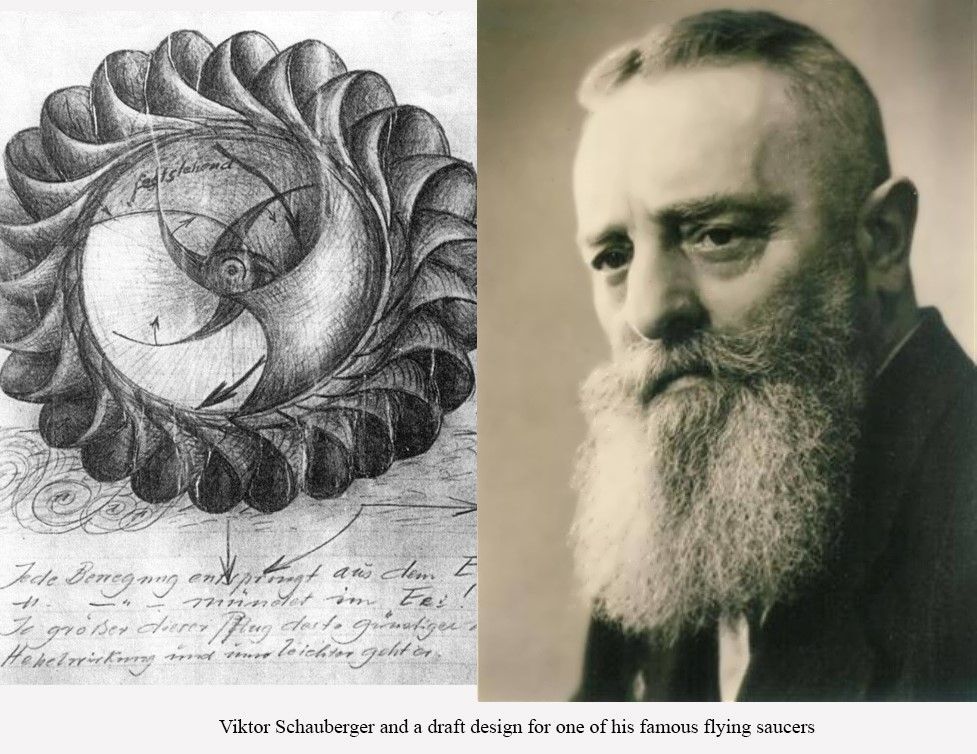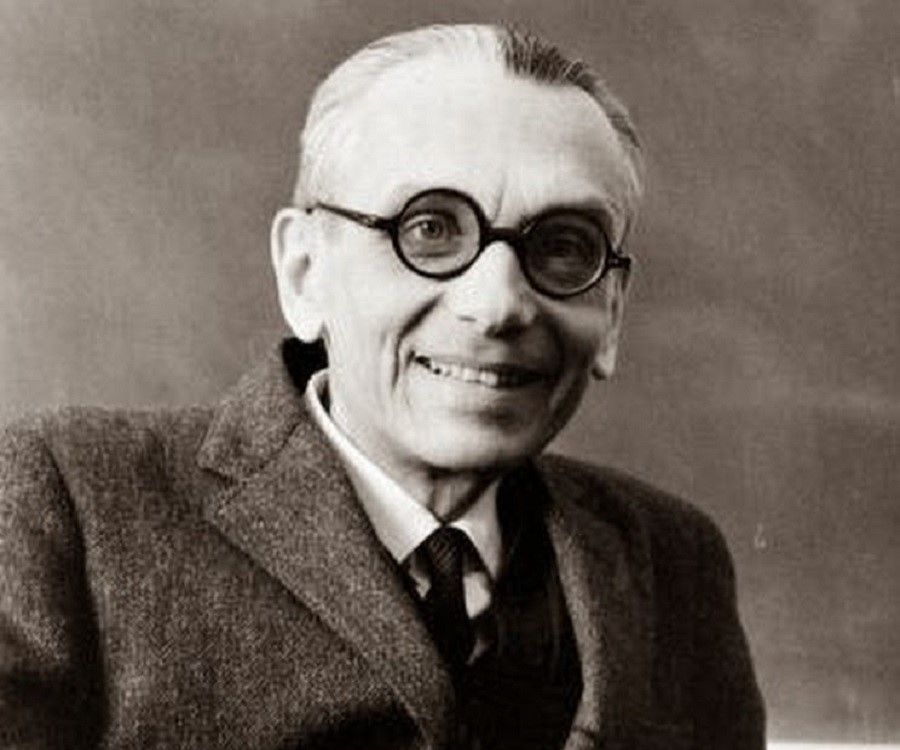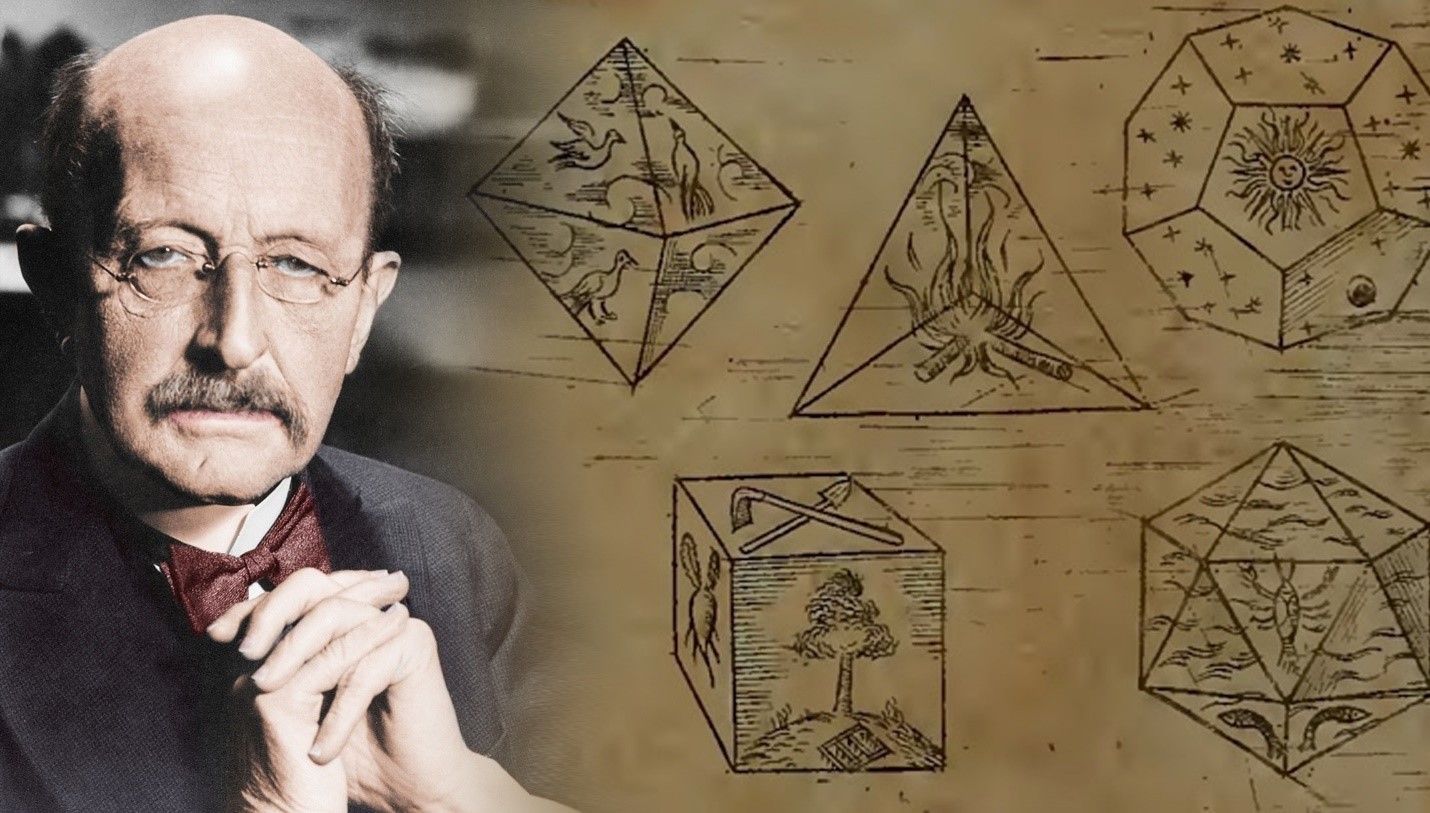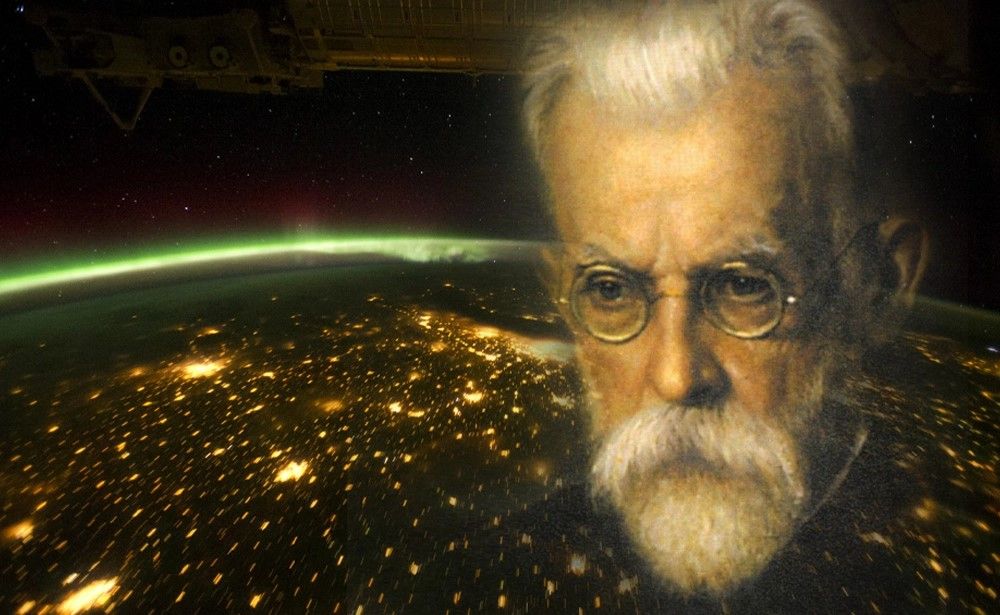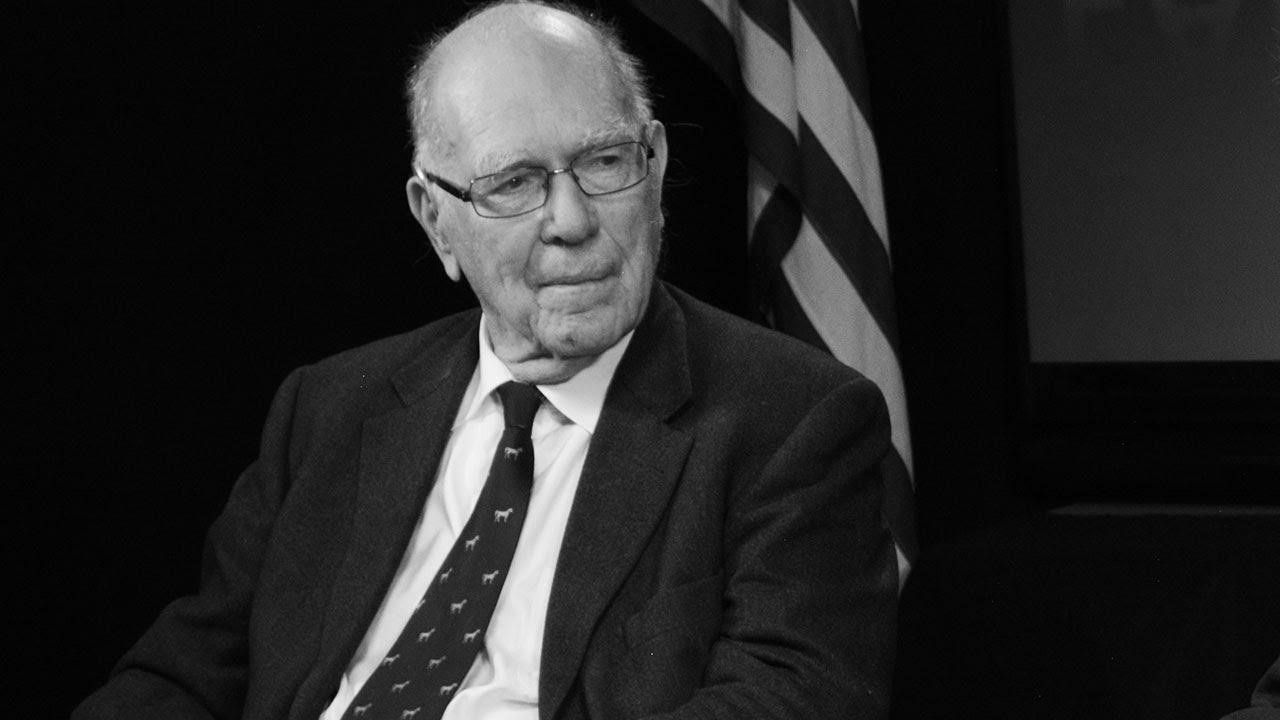Matthew Ehret
In this final segment of his series, Matthew Ehret gives the last word to several leading scientists who took a stand in our modern age against the rise of the cult of darkness.
In our last installment of this series, we explored the evolution of a bad idea known as eugenics throughout the 20th century following its transformation into new clothing after World War II which called itself "transhumanism".
This new "science" danced with another bad idea masquerading as a "universal law" which was called "entropy" and found its champions among an array of social engineers who were committed to a static faith in a dying universe managed by an impotent and irrational God who was made in their own image. The practical application of this entropic science of population control took the form of a system dubbed "cybernetics" founded by an apostle of Bertrand Russell named Norbert Wiener- both of whom attempted to appropriate the name of Gottfried Leibniz (founder of calculus, binary language and computing machines) as a new god head within their new Church.
As we saw in part 2, Leibniz ironically stood in opposition to everything which this new death cult represented.
In this final segment of the series, I wish to give the last word to several leading scientists who took a stand in our modern age against the rise of this cult of darkness. These scientists not only rejected the soul-less system of logic upon which the cult of entropy was birthed, but made revolutionary breakthroughs of universal principle that transformed mankind's very relationship to the universe itself. In EVERY SINGLE CASE, the discoveries made by these scientists could not have occurred without their devout faith in a universe made by a living God of animated by Creativity, Love and Reason.
Although many other notable scientists beyond the five cases selected here could have been included, the spacial and temporal constraints demanded by this essay required that only the most exemplary cases be treated. (1)
Creative Case Study 1: Viktor Schauberger
One of the leading scientists of the Leibnizian tradition to resist this perversion of science and politics was an Austrian naturalist named Viktor Schauberger (1885-1958).
Having made a reputation as a unique genius who had revolutionized land management in Austria, and even aeronautics and machine design by applying his insight of nature's forces to technology, Schauberger was soon brought in front of Adolph Hitler in 1934.
The newly appointed Fuhrer promised Schauberger government support for his research on flying saucer technology that relied upon a unique design of implosion turbines harnessing energy generated by the flow of air and water in specific currents. Overthrowing the popular notion of heat engines which relied on pistons moving by hot combustion leading to irreversible heat loss of the system, Schauberger recognized that his design required no adherence to entropy or its corollary "the conservation of energy" and he went to work. The naturalist expressed his understanding of anti-entropy of living and abiotic nature alike saying:
"Nature is not served by rigid laws, but by rhythmical, reciprocal processes. Nature uses none of the preconditions of the chemist or the physicist for the purposes of evolution. Nature excludes all fire, on principle, for purposes of growth; therefore all contemporary machines are unnatural and constructed according to false premises. Nature avails herself of the biodynamic form of motion [self-organization?] through which the biological prerequisite for the emergence of life is provided. Its purpose is to ur-procreate 'higher' conditions of matter out of the originally inferior raw materials, which afford the evolutionally older, or the numerically greater rising generation, the possibility of a constant capacity to evolve, for without any growing and increasing reserves of energy there would be no evolution or development. This results first and foremost in the collapse of the so-called Law of the Conservation of Energy, and in further consequence the Law of Gravity, and all other dogmatic lose any rational or practical basis."
Despite Schauberger's creative works and discoveries being absorbed into the military industrial complexes first of Hitler's Germany and then by the post-war west, his faith in a living, creative universe that transcended the pain and injustice suffered in his lifetime was unwavering.
Creative Case Study 2: Kurt Gödel
Another genius who entered into combat in defense of creativity and a living God was Kurt Gödel (1906-1978)- a lifelong devotee of Leibniz's philosophy who became convinced that something severely destructive had been created with Bertrand Russell's 1913 Principia Mathematica, and sought to remedy the poison before it could do more damage to scientific creativity than it already had.
In 1931, Gödel published his famous " Incompleteness Theorum" which took Russell's years of work and swiftly converted the entire three volume opus into toilet paper. Gödel did this via an elegant proof that demonstrated that all closed systems that have logically consistent finite axioms have a fatal crack.
Kurt Gödel
As soon as any such system is induced to make a self-referential statement about itself, Gödel demonstrated that other higher states not contained within the parameters of the closed system must necessarily exist. The implications of Gödel's proof not only unshackled mathematics from the entropic cage of Russell's Principia, but also liberated the human scientific thought to once again explore the creative nature of a universe that is both in harmony with the internal mind and heart of mankind but which can always be known ever less imperfectly. Gödel recognized this universe to be not to be a place of cold rigid laws devoid of morality but rather saw our universe as living, creative and self-perfecting without any absolute limit.
Expressing his understanding that order cannot spontaneously arise without purpose from randomness, Gödel spoke of the creative evolution of life which must express the same principle of creativity governing the universe when he said:
"The formation in geological time of the human body by the laws of physics, starting from a random distribution of elementary particles... is as unlikely as the separation of the atmosphere into its components. The complexity of the living things has to be present within the material, from which they are derived, or in the laws governing their formation."
Outlining an unpublished reform of logic and science following the actual method of Gottfried Leibniz, Gödel described his project as "a monadology with a central monad... like the monadology of Leibniz in its general structure."
Taking aim at the machine-thinking of Alan Turing who posited that artificial machines will inevitably outperform the best human minds, Gödel found himself playing the role of Leibniz to the modern age Newtons abounding the fields of science. He zeroed in on Turing's denial of creative reason and the power to discovery universals which transcend the limits of the senses as the Achilles heel to the system of artificial intelligence:
"Turing gives an argument which is supposed to show that mental procedures cannot carry any farther than mechanical procedures. However this argument is inconclusive because it depends on the supposition that a finite mind is capable of only a finite number of distinguishable states. What Turing disregards completely is the fact that mind, in its use, is not static, but constantly developing."
In his later years, Gödel came to realize that one of the primary culprits behind a vast conspiracy to suppress Leibniz's discoveries was none other than Bertrand Russell himself. During a conversation between Karl Menger and Gödel in 1933, science historian Hao Wang wrote: "Menger asked Gödel, 'Who could have an interest in destroying Leibniz's writings?' 'Naturally those people who do not want men to become more intelligent' Gödel replied." (2)
Creative Case Study #3: Max Planck
At the end of his 1935 Philosophy of Physics which extolled high praise on the directed evolution, harmony and creative growth of the universe, the great Max Planck (1858-1947) tackled the problem of entropy in an interesting manner:
"The second law of thermodynamics, the principle of the increase of entropy, has frequently been applied outside physics. For example, attempts have been made to apply the principle that all physical events develop in one sense only to biological evolution- a singularly unhappy attempt so long as the term evolution is associated with the idea of progress, perfection, or improvement. The principle of entropy is such that it can only deal with probabilities and all that it really says is that a state, improbable in itself, is followed on an average by a more probable state. Biologically interpreted, this principle points towards degeneration rather than improvement: the chaotic, the ordinary and the common is always more probable than the harmonious, the excellent, or the rare."
Planck had watched the growth of two false schools that had formed during the rise of the quantum world which he had pioneered. On the one side he watched Russell-connected positivists who promoted the idea that truth must be of a 100% mathematical certainty stand their ground in opposition to the reality that Newtonian rules seemed to break down on scales of the very small and very large. The contrary school then led by Niels Bohr and groups of young mathematical probability theorists recognized the impossibility of Russell's absurd standard of perfection ever being attained. The reasoning was simple: The universe is a complex and non-linear process who's very essence is incommensurable with linear systems of mathematical logic.
Throughout his last decades of life, Planck worked tirelessly to break this false dichotomy because he understood both sides were trapped by an absence of creativity, 2) a lack of love of actual truth and 3) an obedience to materialism that prevented either side from recognizing the higher plane of reality that only a creative spirit could understood.
Planck was explicit on this point saying:
"As a man who has devoted his whole life to the most clear-headed science, to the study of matter, I can tell you as a result of my research about atoms this much: There is no matter as such. All matter originates and exists only by virtue of a force which brings the particle of an atom to vibration and holds the most minute solar system of the atom together. We must assume behind this force the existence of a conscious and intelligent mind."
Planck understood clearly as did his friends Gödel and Einstein that in order for human beings to be made in the living image of a Creator, we must necessarily have had to be endowed with a quality of free will. The existence of free will gave us the choice to develop or not develop those creative, loving qualities that were innate with us at birth but which robots and animals had no access to. Machines could only do what they were programed to by people and animals could only do what they were programed to by God, but human beings could disobey our nature and become corrupt, materialistic and loose our access to our creative powers as Russell, Wiener, Julian Huxley and other imperialists did.
Describing his view of science and human nature in ways that would enrage a closed-system imperialist, Planck stated:
"Science cannot solve the ultimate mystery of nature, and that is because, in the last analysis, we ourselves are part of nature, and therefore, part of the mystery that we are trying to solve. Music and art are, to an extent, also attempts to solve, or at least express that mystery. But to my mind, the more we progress with either, the more we are brought into harmony with all nature itself. And that is one of the great services of science to the individual."
Creative Case Study 4: Vladimir Vernadsky
One of the most important great scientists of this period was the Russian biogeochemist Vladimir Vernadsky (1863-1945) who rose to prominence as a student of the great Russian chemist Dimitry Mendeleyev. It is notable that Vernadsky's father was a famous Russian professor of political economy who translated and taught the works of Henry C. Carey in Russian universities. Vernadsky later recalled that his family had a framed photograph of Abraham Lincoln hanging in their home growing up.
Vernadsky made frontier breakthroughs in so many fields that he had to create an entirely new field of research from scratch known as "biogeochemistry". Realizing that the universe could not be evaluated from a simply non-living physics, Vernadsky recognized not one but three nested coexisting physical space times that organized the behavior of all matter and energy: 1) the abiotic/lithosphere, 2) the living/biosphere and 3) the creative/noosphere.
While each system had certain common invariant characteristics (such as creative directionality, harmony, and symmetry), there were certain general principles unique to higher phase spaces.
For example, Vernadsky pointed out that living processes exhibit golden section/five-fold symmetries while non-living phase spaces do not. Additionally, biotic solutions such as sugars will rotate a plane of polarized light while nonliving solutions do not. Most importantly the density of chemical and atomic migration of elements through a living system occurs at far denser fluxes than anything visible in non-living systems where motion and cycles of atomic migrations happen at much more gradual speeds (think of the cycle of a carbon atom through an ecosystem on earth vs a carbon atom on the moon).
In his Problem of Time in Contemporary Science, Vernadsky takes aim at the second law of thermodynamics popularized by Clausius alluding to its logical consistency with itself, but not with the empirical reality of the discoverable real universe:
"In one case, in 1824 the young French engineer Sadi Carnot founded thermodynamics. Carnot's principle defines the unidirectional course of a process in time. Thirty years later, Rudolph Julius Clausius, then a professor at Zürich, in the principle of entropy, generalized this unidirectional process (which is expressed geometrically in space-time by a polar vector of time) to all of reality, as defining the"end of the world."In this form, this was an extrapolation of a logical thought, but not a phenomenon of reality."
Vernadsky went even further in his 1838 Writings on Biogeochemistry by explaining that entropy could not co-exist with the fact of evolutionary creativity, and the law of living matter to constantly leap beyond its limits to growth. Vernadsky writes:
"Due to the existence of life, the entropy of the universe should decrease in biospheric phenomena and not increase... Clausius' entropy does not really exist; it is not a fact of being, but a mathematical expression, useful and necessary when it allows expression of natural phenomena in mathematical language. It is correct only as far as its premisses are concerned. The deviation from Carnot's principle by such an essential phenomenon as living matter and its influence upon the biosphere shows that life does not stay within the premises for which entropy is stated."
From WWI until his death in 1945, Vernadsky not only worked closely with Marie Curie in France, became president of the Russian Academy of Science and Founded the Ukraine Academy of Sciences while also putting scientific discoveries to the service of humankind as the head of the Center for Productive Forces which were essential for Russia's victory over fascism. To this degree Vernadsky, like Leibniz and Carey before him, sought to map out and utilize nature's resources for the benefit of human society by obeying nature's laws.
In his essay "Some Words About the Noosphere" (1943), Vernadsky watched the ravages of WWII but saw a brighter destiny beyond the chaos as a new age of creative mentation was finally emerging as the third phase space:
"Now we live in the period of a new geological evolutionary change in the biosphere. We are entering the noosphere. This new elemental geological process is taking place at a stormy time, in the epoch of a destructive world war. But the important fact is that our democratic ideals are in tune with the elemental geological processes, with the law of nature and with the noosphere. Therefore we may face the future with confidence. It is in our hands. We will not let it go."
Johannes Kepler, Gottfried Leibniz, Henry C Carey, Viktor Schauberger, Kurt Gödel, Max Planck and Vernadsky all recognized that their own personal creative thoughts which leapt from states of ignorance to knowledge in non-mathematical leaps of eurekas were 1) driven by a love which no computer could express and 2) reflected in the same loving creative energy that shaped the unfolding of "objective" creation in ways that demonstrated the universe to be not a closed dying entropic system but rather a system of living, creative, loving yearning for infinite self-perfectibility.
Creative Case Study 5: Lyndon LaRouche
This list would not be complete without the inclusion of the recently deceased philosopher and economist Lyndon LaRouche (1922-2019) who did more than anyone in recent years to revive the method of Plato and Leibniz in opposition to the transhumanist death cult which increasingly came to dominate western governments during his own lifetime.
After wrestling with the fallacious argument advanced by Norbert Wiener in his 1950 Human Use of Human Beings which assumed that both the human mind, and species more generally could be understood as binary computer program, a 30 year old LaRouche described the emergence of his discovery of economic science from an entirely new vantage point in 1952. Unlike the cyberneticists and their closed system commitment to a universe dominated by entropy, LaRouche's concept of economic science relied upon an appreciation for the primacy of the anti-entropic character of both the biosphere, the human species and the universe as a whole. His concept of universal history, economic science and philosophy were conveyed in thousands of lectures and writings over his half century of activism, but no where are these concepts more rigorously outlined (in this author's humble opinion) than in the 1984 So You Wish to Learn All About Economics and 1991 Science of a Christian Economy.
From this healthier anti-entropic foundation which had already been advanced by Platonic humanists outlined in this four-part series, LaRouche noted that all three domains can be observed to strive always to attain higher states of creative expression both materially and spiritually. Although the rates of creative change express themselves on different orders of magnitude, the causal presence of creative life is evident in all three domains.
Not a single shred of evidence demonstrates that an opposing nature of stasis or absolute limits contains this tendency in either time or space. This qualitative/quantitative growth function was at the heart of all healthy notions of "progress" and was identical to the notion of economic science developed by such scientist statesmen as Leibniz, Benjamin Franklin and Henry C Carey.
Describing the principled notion of progress upon which natural law must be premised if a nation is to avoid falling under the control of oligarchical corruption, which was at the heart of the crafting of the U.S. Constitution itself, LaRouche said:
"The most essential of the preconditions for the political freedom which our Federal Constitution was intended to secure for us and our posterity, is the commitment to an increase in the net physical powers of productivity of the means of existence of a growing population of our republic and, hopefully, a contribution of a kindred quality for other nations as well. On this account, there can be no other definition of wealth than the net increase of the physical wealth produced per capita and per square kilometer of territory of our nation and, also, our assistance to that same quality of end for the other nations which our republic must cooperate, that done for common ends, on behalf of the general welfare of humanity as a whole."
Taking his analysis beyond the simple level of anti-Malthusian economic systems applicable to a species which must leap beyond their limits to growth by always refining our powers of creative discovery, LaRouche noted that our concept of the universe itself must be brought into play, saying:
"It is the nature of the universe, a nature which must be the guidance of all sane nations and their peoples, that our universe demands, as a condition for our survival, that we pursue a vigorously anti-entropic policy of universal practice, as for the case of"fire", which only mankind among all living creatures practices, through a persistent increase in the energy-flux-density in the principal forms of action on which not only the progress, but the very survival of a human culture depends."
The author delivered a lecture 'Destroying the 2nd Law of Thermodynamics' in 2014 elaborating upon the content of this five-part report which can be viewed here.
